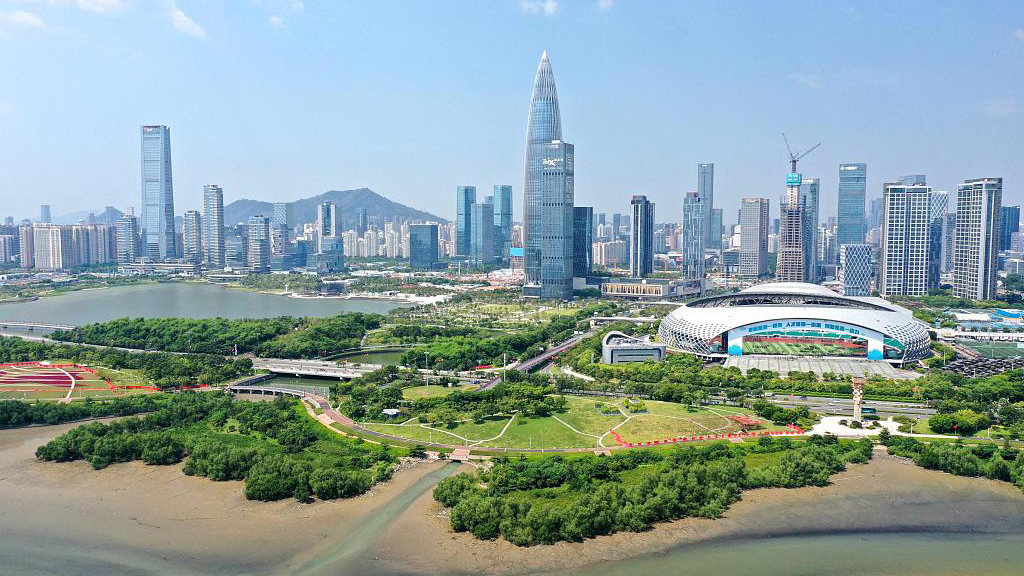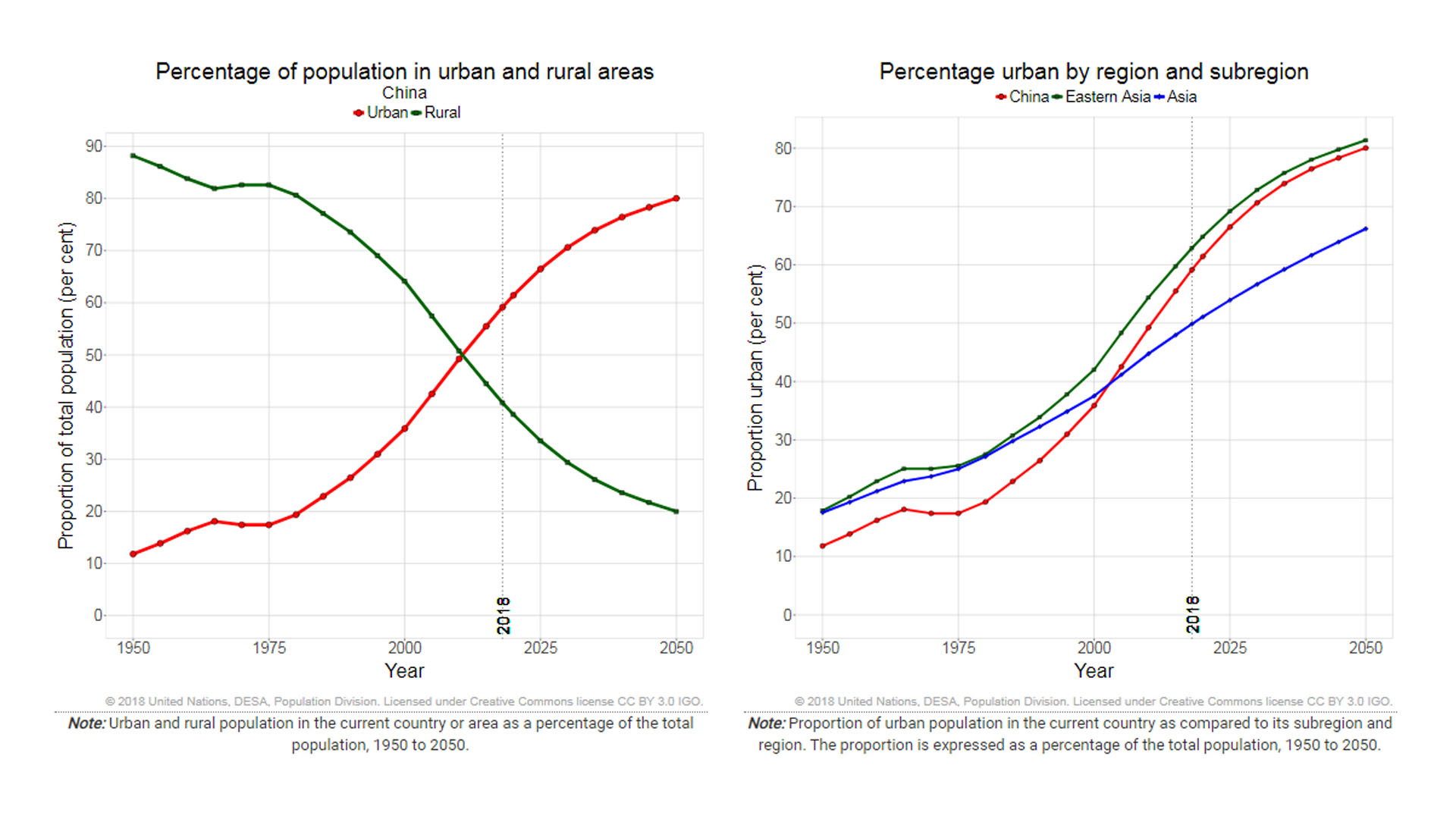03:48

Cities are the nerve centers of the world. An estimated 56 percent of the global population live in urban settlements today, with that number set to grow exponentially in the coming decades. China, which has added an astounding 650 million people to its cities in the last four decades, is bound to play a key role in global urbanization.
As the United Nations observes World Cities Day (WCD) on October 31, it is worth noting that of the 20 fastest growing cities in the world today, seven are from China – Shanghai, Chongqing, Beijing, Suzhou, Guangzhou, Nanjing and Xi'an.
In fact it was at the Shanghai International Expo 2010 that the idea for an international day to encourage international community's interest in global urbanization was conceived and led to the UN General Assembly passing a resolution in December 2013 to designate October 31 as World Cities Day.
This year, World Cities Day is being held in Ekaterinburg, the fourth largest city in Russia and the administrative capital of Sverdlovsk Oblast. The Russian host city is being aided actively by UN-Habitat and the Shanghai Municipal People's Government as the joint organizers of the annual event.
"I would like to thank the city of Ekaterinburg, Russian Federation for hosting the global observance of World Cities Day 2019 and the Shanghai Municipal People's Government as well as the Government of the People's Republic of China, which took the initiative in 2013 to establish World Cities Day through a United Nations resolution," UN-Habitat Executive Director Maimunah Mohd Sharif remarked in a written message released ahead of the occasion.

World Cities Day draws the attention of the international community on how urbanization can be used to achieve sustainable development. While the general theme is "Better City, Better Life," the specific theme for 2019 is "Changing the World: Innovations and a Better Life for Future Generations."
"Cities are where many global problems, from climate change to inequality and migration, impact most people, especially the most vulnerable. Cities also create many of those challenges. Continuing to run our cities in the usual way will lead to increased global warming, higher mountains of waste, expanding informal settlements, gridlocked traffic and uncontrollable unplanned urban sprawl. In short – unsustainable cities," noted Sharif, who's also the UN under-secretary-general.
Emphasizing that this is exactly the opposite of inclusive, safer, sustainable and resilient cities envisaged under the UN Sustainable Development Goal 11 to be attained by 2030, Sharif insisted that "we urgently need fresh new ideas to help transform the way we live in cities."
"Innovation encompasses simple, ingenious ideas and complex frontier technology. Innovation can help us to design improved people and environment friendly cities with inclusive neighborhoods and public spaces, to create thriving ecosystems and biodiversity hubs and produce green energy," she stated.
"Imaginative ideas will allow us to be more efficient and effective in the way we manage our resources, we move people and goods, deliver our services and construct our infrastructure and buildings," Sharif added.
According to a concept note by UN-Habitat, the main goals of World Cities Day 2019 are to:
1. Increase awareness of how digital innovations can be used for urban service delivery to enhance quality of life and improve the urban environment
2. Highlight and share promising best practices on new frontier technologies that can create more inclusive cities; and present opportunities for renewable energy generation in cities
3. Explore how frontier technologies can promote social inclusion in cities; including those furthest from behind

Photo via United Nations Population Division
Photo via United Nations Population Division
China has been at the center stage of global urbanization in recent decades. In 1978, just a little over 171 million people, or 17.92 percent of the total Chinese population, lived in cities. By 2017, the number of China's urban dwellers soared to about 813 million or 58.52 percent of the country's population, surpassing the global urbanization average of 54.74 percent.
By 2030, urban population will account for 60 percent of the global population and one in every three people will live in cities with at least half a million inhabitants, according to United Nations' data on world's cities.
In comparison, China's urbanization rate will reach 70 percent by 2035 with over 1 billion Chinese citizens living and working in cities with a combined area of 100,000 square kilometers, according to a report published by the National Academy of Economic Strategy (NAES) under the Chinese Academy of Social Sciences.
The pace and scale of urbanization has had a profound impact not only on China's political, environmental, and economic conditions but has created ripples across the world in profound ways, influencing everything from global climate prospects to socioeconomic conditions, and indeed the world economy.

Photo via United Nations Population Division
Photo via United Nations Population Division
Urbanization has been an important catalyst in pulling more than 700 million people out of poverty, many of whom participated in China's massive rural-urban migration, moving from the countryside to the cities and from agriculture into jobs in industry and services.
China's cities have largely avoided the social ills of rapid urbanization such as widespread urban unemployment and poverty. This has been achieved partly by regulating the flow of people to its cities, but more so by creating the conditions for rapid growth in income and employment.
The continued urbanization is bound to cause a surge in China's consuming capacity in the coming decades as it transforms into a high-income country. China's mega cities now have income levels comparable to some member countries of the Organization for Economic Co-operation and Development (OECD).
Brookings Institute's Global Metro Monitor in 2018 reported that 103 of the world's 300 largest metropolitan economies are now in China. In 2014, that number was fewer than 50. The NAES report revealed that the per capita GDP in 12 Chinese cities in 2018 topped 20,000 U.S. dollars, squarely putting them in the category of high-income cities.
Creating sustainable cities

China has been at the forefront of sustainable development in recent years. California-based Milken Institute has been tracking the best-performing cities in China since 2015, based on comprehensive data from 34 tier-1 and tier-2 cities and 228 tier-3 cities.
Chengdu, the capital of China's southwestern Sichuan Province, topped the Milken Institute's 2019 index of China's best-performing cities release on October 23 at the Yale Center in Beijing. Chengdu, best known internationally for its pandas, topped the list for the third time in the last five years.
As one of the most important economic, cultural, transportation, and communication centers in southwestern China, Chengdu is transforming itself into a hi-tech industrial center with an international reputation that amplifies its economic influence on regional development.
Shenzhen in southern Guangdong Province secured second place in the Milken Institute's rankings. Shenzhen's transformation as China's innovation powerhouse from an erstwhile low-cost gadget manufacturing center has been remarkable. Encouraged by its success, the Chinese government has given Shenzhen the mission of building a model city for the world.

Photo via United Nations Population Division
Photo via United Nations Population Division
The country's capital city, Beijing, captured the third spot riding on the development of the Tongzhou district, home to the city's municipal government, and a substantial influx of foreign direct investment.
Lanzhou, capital of China's northwestern Gansu Province, which is right at the center of China-proposed Belt and Road Initiative, stood fourth and Zhengzhou, capital of central Henan Province, was ranked fifth. Xi'an, Guiyang, Changchun, Wuhan, Xiamen, Nanjing, Hefei, Qingdao, Shanghai and Guangzhou rounded up the Top 15 in the Milken index.
China has also received global acclaim for implementing an efficient, inclusive, and sustainable urbanization program that contributes positively to its development goals. No wonder, Nobel Prize-winner economist Joseph Stiglitz proclaimed China's urbanization as one of the two main forces shaping the world in the 21st century.
(Cover: A panoramic view of Shenzhen. /VCG Photo)
Script and narration: Abhishek G Bhaya
Video editor: Sun Siyi
Infographics: Liu Shaozhen